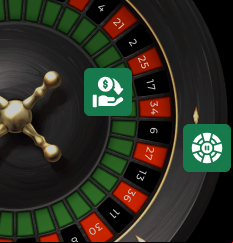What is d'Alembert roulette strategy?
The strategy itself is quite simple. The main goal is to increase the wager after a loss and decrease it after a win. For example, if you play with 1 AUD and lose, you must place a 2 AUD wager on the next spin. If you win while playing with 2 AUD, the wager amount must be decreased to 1 AUD in the next spin. d'Alembert is similar to the Martingale strategy, but the wager increase is not that dramatic, and for the same reason, it can be said that it is more suitable for small bankrolls. There are two more things to watch out for: you must place your wagers on bets that only pay 1:1 (low/high, odd/even, red/black) and start the game with a wager amount that does not exceed 1% of your bankroll.
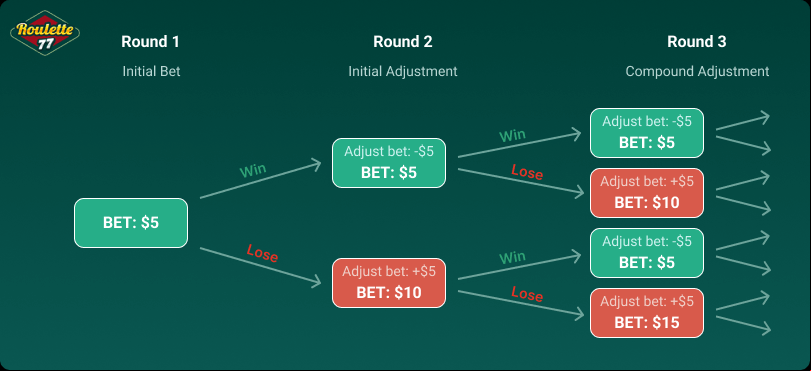
Let's take a closer look at how the d'Alembert strategy works, with a practical example:
d’ALEMBERT STRATEGY EXAMPLE
- Spin 1
We start playing with 2 AUD. Let's pretend we win: since this is our first bet, we proceed to the second spin without changing the wager amount.
- Spin 2
The wager amount is still 2 AUD and we lost. On the next spin, we must increase the wager by its initial value.
- Spin 3
The wager amount is currently 4 AUD. We lost again, so on the next spin we need to increase it once more by the initial value.
- Spin 4
The wager amount is currently 6 AUD. This time we won: on the next spin, we will reduce the wager amount by the initial value.
- Spin 5
We are currently playing with 4 AUD. If we win, we will play with 2 AUD in the next spin. If we lose, we will go back to 6 AUD and this cycle will continue.
Our simulation of the d'Alembert system
Now is the time to test this strategy. We will do automatic spins using a roulette simulator and visualize the results via Google Sheets. In the first simulation, we give the player a bankroll of 500 AUD and spin the wheel 500 times. The initial wager will be 5 AUD in all these spins.
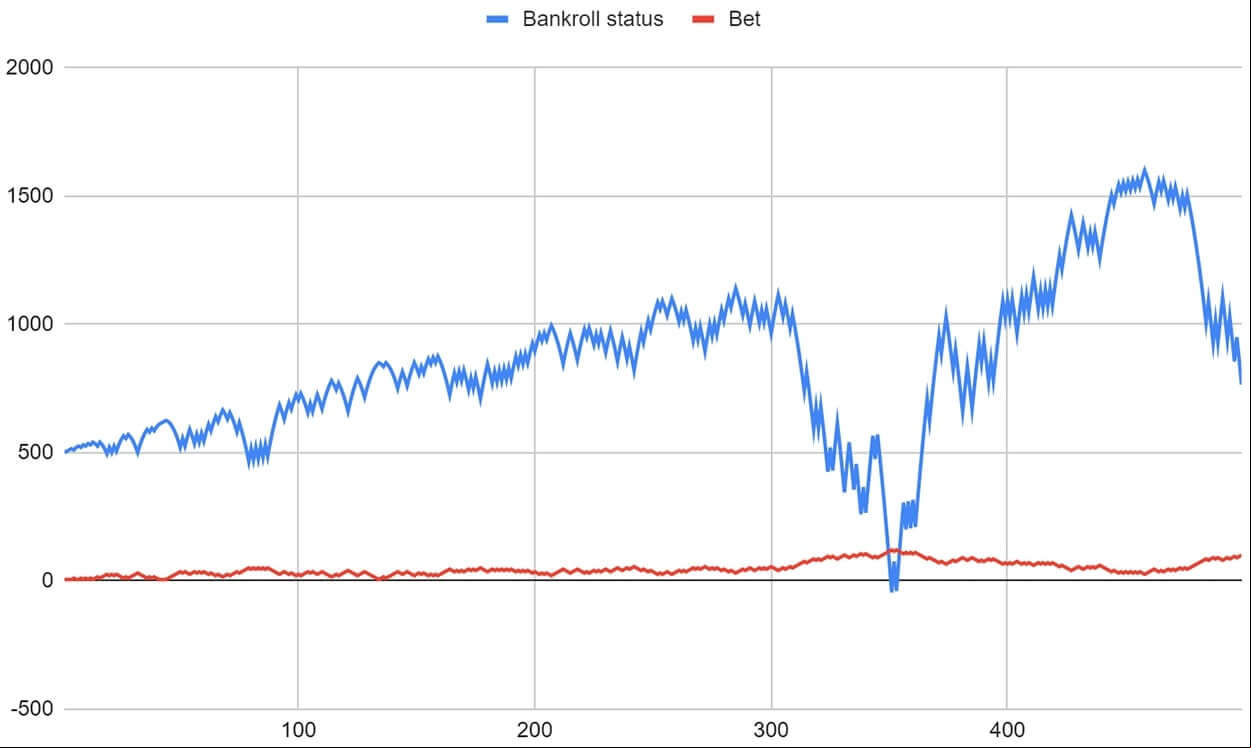
As can be seen from this chart, the wager amount continues to increase steadily, except for a few statistical deviations. This is because we increase the wager after each loss, as explained above. A noticeable change takes place between 300 and 400 spins: on the 350th spin, the amount of wager required to be placed has increased to 115 AUD, but doing so has almost zeroed the player's bankroll. In other words, we did not have any money left to continue implementing the system: we went bankrupt before we could reach 400 spins.
We will give the second player a bankroll of 1,000 AUD and increase the initial wager value to 10 AUD:
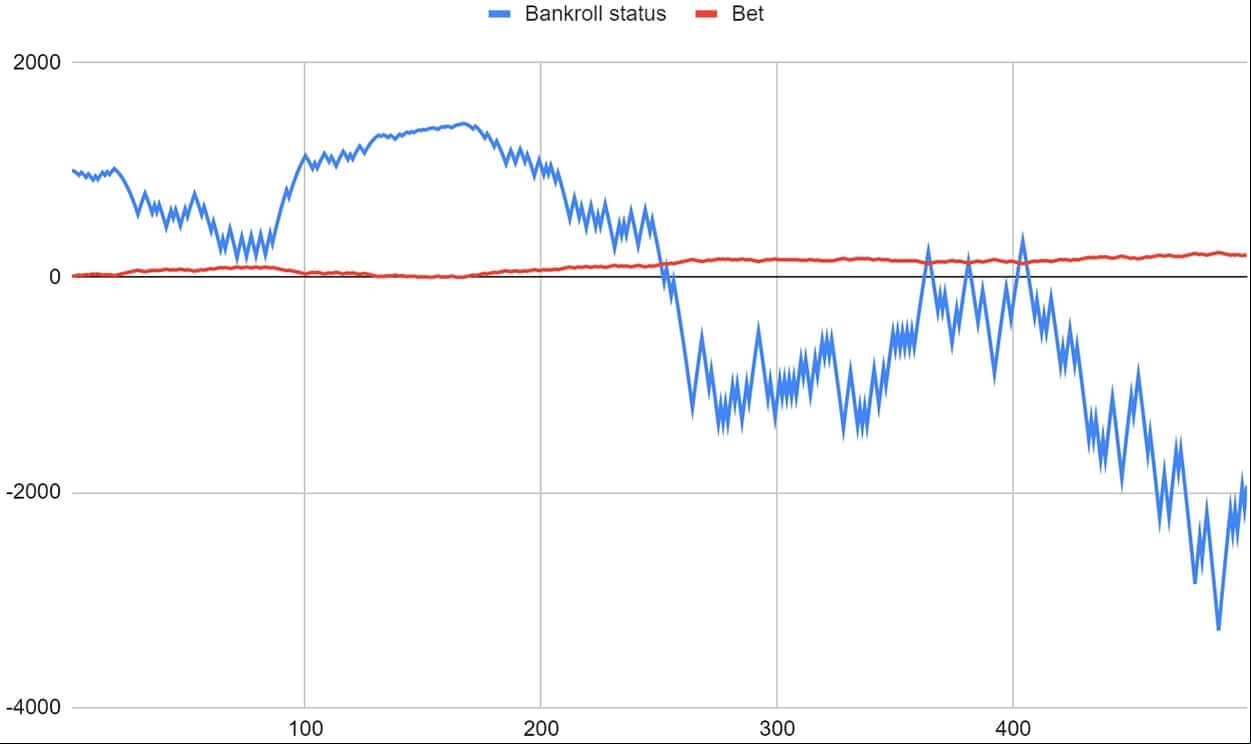
In this simulation, however, the bankruptcy occurred earlier (spin 251). In general, we can say that every 100 spins there is a radical change in the bankroll status.
We also gave the third player a bankroll of 1,000 AUD, but this time we reduced the initial wager to 5 AUD:
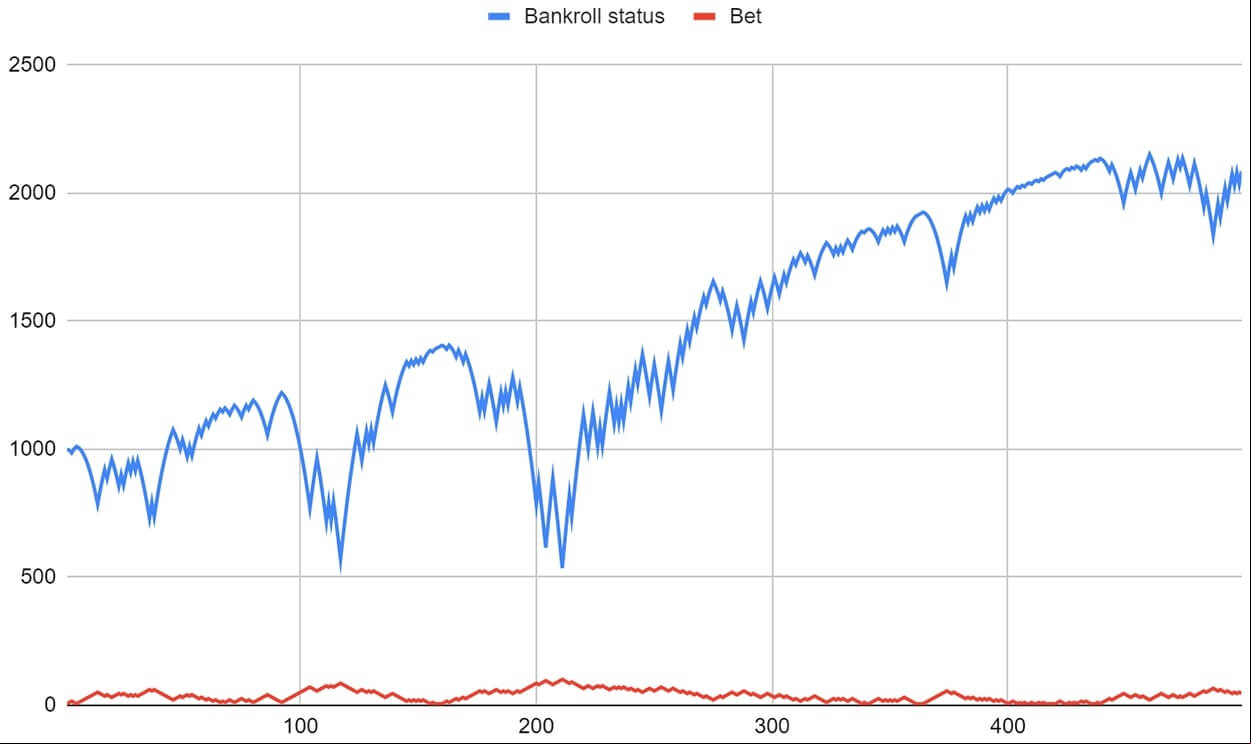
We said above that there are radical changes in bankroll status every 100 spins, you can see this in this simulation as well. This time, however, these changes were not radical enough to cause bankruptcy. In this experiment, the player did not go bankrupt and even managed to make a profit by completing the simulation with 2,130 AUD. This shows that d'Alembert, like many other roulette strategies, requires a large bankroll to work efficiently. We can also say that as the wager amount increases, the changes in the bankroll status become more volatile.
However, it would be wrong to draw any other conclusions from these simulations. We performed multiple experiments with different values, and we cannot say that there is a statistical consistency between the results. The effectiveness of d'Alembert varies according to the win/loss frequency and only luck determines what it will be.
What you should expect from d'Alembert strategy
This is not as risky a strategy as Martingale and allows wager growth to take place in a more controlled manner. However:
- The longer the game, the more volatile changes in bankroll status become. This means that after the first 100 spins, the risk of going bankrupt increases significantly.
- However, like many strategies with a progressive increase, d'Alembert does not provide any appreciable benefit in the short run: you almost always have to complete more than 100 spins to get useful results.
Conclusion
We can say that d'Alembert is safer than many other progressive betting strategies. For example, in Martingale, bankruptcy can occur even within the first 100 spins. In this system, the first 100 spins are completed more safely. However, since wager growth is slower, it takes longer for the system to start showing results.
You can try d'Alembert if your bankroll is big enough to cover status changes between the spins, but two important things: first, AU$5 and below seem to be the best value for an initial wager. Two, don't be persistent if you still haven't achieved the results you want after the first 300 spins: this strategy becomes much more unstable as the number of spins increases.
Thus, playing this strategy for a very long time makes no sense because the longer you play, the more likely you are to lose. Therefore, it is important to leave in time and keep this rule in mind when building a game plan.












